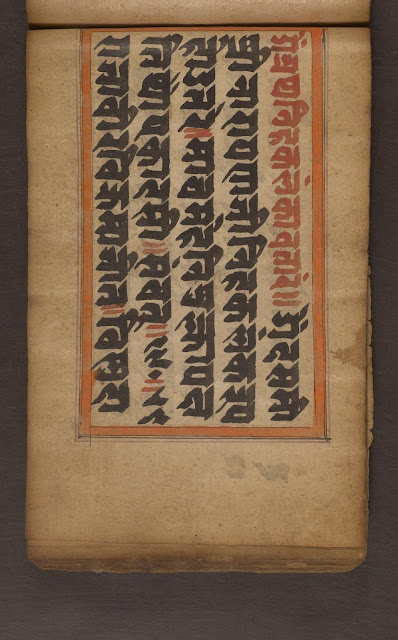The Book of Kells is probably the reason why I started this biblio-adventure blog. Was trying to obtain the complete digital facsimile of this medieval jewel, visiting virtual libraries and digitalization Projets around the world when I decided to start writing my personal book of books -somehow, an "archivistic projetc"-. A blog about ancient manuscripts and rare books was a good option...
This codex is considered one of Ireland's greatest treasures. The name "Book of Kells" is derived from the Abbey of Kells, County Meath, which was its home for much of the medieval period. The manuscript's date and place of production have been the subject of considerable debate and don’t want to continue here. For consideration only: there are at least five competing theories about the manuscript's place of origin and time of completion.
For me the most incredible mystery is how the book survived in that incredibly good condition to our present days, taking specially into account that Kells Abbey was plundered and pillaged by Vikings many times in the 10th century (the book remained in Kells until 1654). Another mistery is regarding its lavish and complex decorations. Some of them can only be fully seen with magnifying glasses, although lenses of the required power are not known to have been available until hundreds of years after the book's completion.
About its contents, The Book of Kells contains the text of the four Gospels, that’s all. It’s based on the Vulgata (a late 4th-century Latin translation of the Bible), but evidences suggests that when the scribes were writing the text they often depended on memory rather than on other copy. Probably because no other copy was available in the Abbey and they were just trying to save their own way of life (Vikings were continuously pillaging the coasts and inner lands of Hibernia, moors invading Hispania from north Africa, absolutely hard times for Christianity from 8th to 10th in Europe).
There're at least the following facsimile editions for the codex. I could obtain a high quality digital copy 3 years ago, but I think is not available anymore. If interested contact me (facsimilium AT gmail, dot com). Swiss publisher Urs Graf Verlag Bern produced the first facsimile in 1951, but black and white only. In 1974 and under license from the Board of Trinity College Dublin, Thames and Hudson produced a second facsimile in color. After that, Trinity College officials denied more reproductions, to avoid damage the Book due to the pass of pages process. But later in 1986, Faksimile-Verlag developed a process that used suction to straighten a page so that it could be photographed without touching it and so won permission to publish a new facsimile. There're other later partial reproductions but the base for the total facsimile, in which each page was photographed, was the 86 copy. With new digital techniques developed during this last decade, corrections have been applied to obtain the best facsimile, published in 2006 and also digitized in high quality pdf and jpg formats.
There're at least the following facsimile editions for the codex. I could obtain a high quality digital copy 3 years ago, but I think is not available anymore. If interested contact me (facsimilium AT gmail, dot com). Swiss publisher Urs Graf Verlag Bern produced the first facsimile in 1951, but black and white only. In 1974 and under license from the Board of Trinity College Dublin, Thames and Hudson produced a second facsimile in color. After that, Trinity College officials denied more reproductions, to avoid damage the Book due to the pass of pages process. But later in 1986, Faksimile-Verlag developed a process that used suction to straighten a page so that it could be photographed without touching it and so won permission to publish a new facsimile. There're other later partial reproductions but the base for the total facsimile, in which each page was photographed, was the 86 copy. With new digital techniques developed during this last decade, corrections have been applied to obtain the best facsimile, published in 2006 and also digitized in high quality pdf and jpg formats.
 |
| Google made an awesome doodle this year to celebrate St. Patrick's Day, clearly inspired in the Book of Kells. I recommend the link to the doodle creator, here... see doodle super close-ups |
Technical description of the Book:
- Written primarily in “insular majuscule” with some occurrences of minuscule letters (usually e or s).
- Identified at least three scribes in this manuscript, as usual they were named as hand A, B and C. Hand A, for the most part, writes eighteen or nineteen lines per page in brown color. Hand B has a somewhat greater tendency to use minuscule and uses red, purple and black ink and a variable number of lines per page. Hand B is not constant as A, changes the number of lines per page, which is not normal in medieval manuscripts. And finally, hand C is found throughout the majority of the text, with a great tendence to use minuscule, at least in comparison with hand A.
- Illuminations: There are ten surviving full-page illuminations including two evangelist portraits, three pages with the four evangelist symbols, a carpet page, a miniature of the Virgin and Child, a miniature of Christ enthroned, and miniatures of the Arrest of Jesus and the Temptation of Christ.
And finally, my favorite anecdote of the amazing Book of Kells. There’s an error located at Matthew 10:34b. It should read "I came not to send peace, but a sword," but the manuscript reads gaudium ("joy") instead of gladium ("sword") and so translates as "I came not [only] to send peace, but joy”
 |
| An image of the Virgin and Child. This is the oldest existent image of the Virgin Mary in a European Western manuscript. The iconography of the miniature may derive from an Eastern or Coptic icon. |




_P%C3%A1gina_049.jpg)
_P%C3%A1gina_053.jpg)
_P%C3%A1gina_055.jpg)
_P%C3%A1gina_087.jpg)
_P%C3%A1gina_093.jpg)
_P%C3%A1gina_085.jpg)










